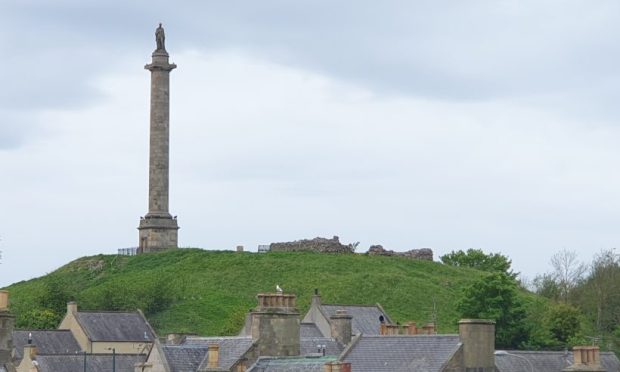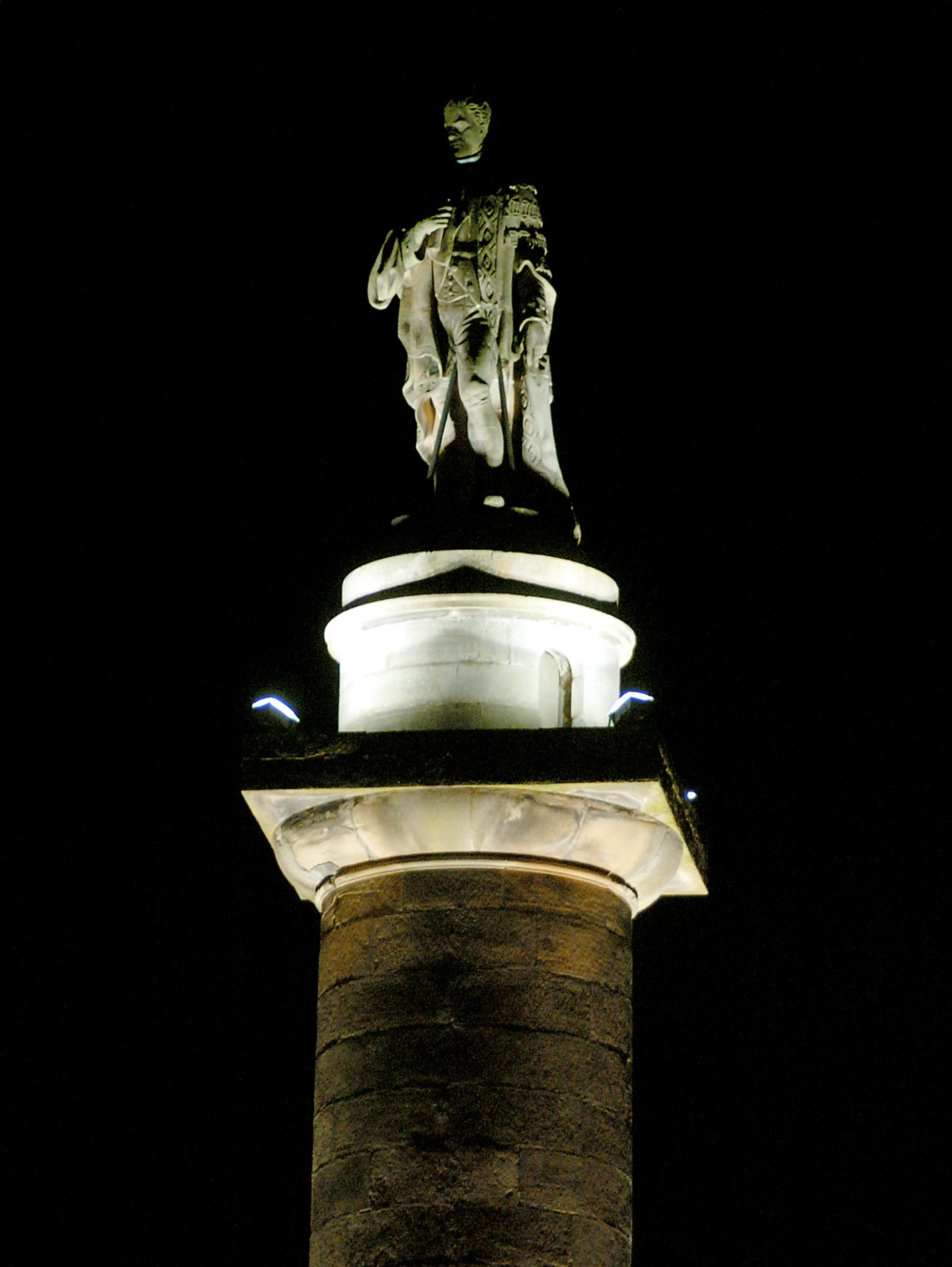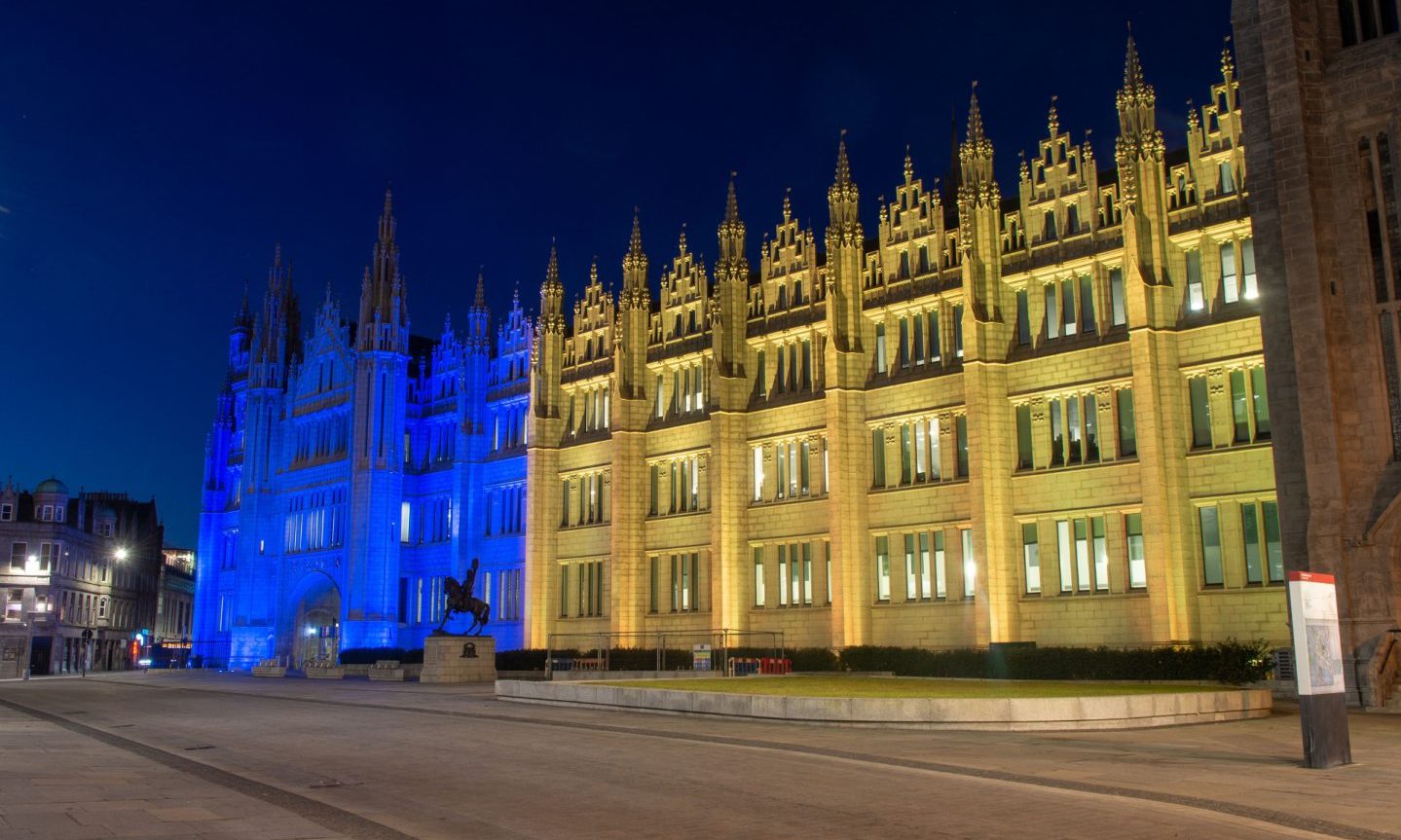One of Elgin’s most prominent landmarks could soon be seen in a way that it has never been before.
The 80ft Duke of Gordon monument has stood proudly as the highest point in the town on Ladyhill for nearly two centuries.
For many years the A-listed landmark has been lit up at night to ensure it can continue to be seen across the community, even at night.
However, now it has been revealed changes planned for the column could put it in an even brighter spotlight.
Increased profile planned for Ladyhill monument in Elgin
Moray Council has applied for permission to remove the existing white lights on the Ladyhill monument in Elgin.
Instead, they want to install “near identical” LED fittings that have the ability to change colour.
Planning documents say it will allow the Ladyhill monument to be lit up to commemorate local and national events.
They add: “The proposal therefore is to change the existing white only LEDs for a colour changing LED light fitting thereby allowing any colour or combination of colours to light up the monument to support various community / national / international causes.
“This proposed alteration will not affect the aesthetics of the monument as the light fittings will only be as visible as the existing LED fittings are.
“This work will however help to conserve the monument by raising its profile within the community in salient moments for future generations to come and enjoy.”
Elgin’s town centre fountain is already lit up to mark specific occasions, including turning red for Remembrance events and blue for World Parkinson’s Day.
No specific suggestions have been put forward yet for the lights to be installed on the Ladyhill monument in Elgin.
Who was the Duke of Gordon?
The Ladyhill column was built in honour of George Gordon, who was the fifth and final Duke of Gordon.
The nobleman, who inherited Gordon Castle in Fochabers from his father, was born in Edinburgh. He was a professional soldier, rising to the rank of general.
George Gordon himself established the Gordon Chapel in Fochabers, where there is a memorial tablet dedicated to him.
He was buried at Elgin Cathedral after his death in 1836. The monument was erected in 1839.



Conversation